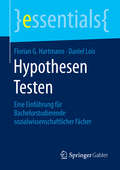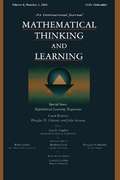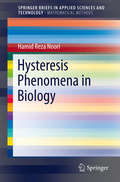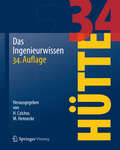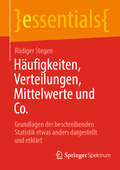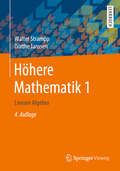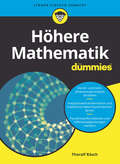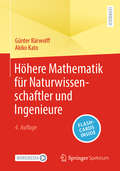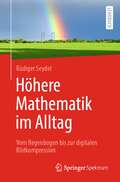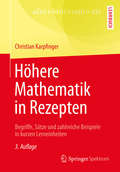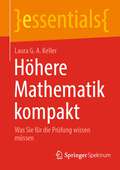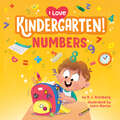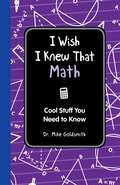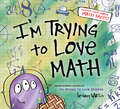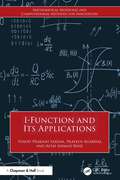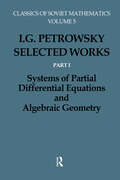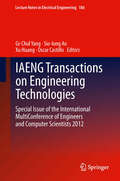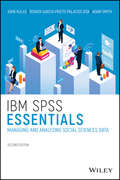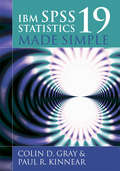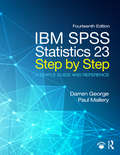- Table View
- List View
Hypothesen Testen: Eine Einführung für Bachelorstudierende sozialwissenschaftlicher Fächer (essentials)
by Florian G. Hartmann Daniel LoisDie Sozialwissenschaftler Florian G. Hartmann und Daniel Lois erklären in diesem Essential Schritt für Schritt und auf Nachvollziehbarkeit bedacht, wie im Rahmen einer quantitativen Untersuchung Hypothesen überprüft werden. Dabei werden methodische und statistische Grundbegriffe besprochen und komplexere Sachverhalte anhand von alltagsnahen Beispielen erläutert. Die Autoren schöpfen bei den Erklärungen aus ihrer Lehr- und Forschungstätigkeit und berücksichtigen die Erfahrungen ihres eigenen Studiums.
Hypothetical Learning Trajectories: A Special Issue of Mathematical Thinking and Learning
by Douglas H. Clements Julie SaramaThe purpose of this special issue is to present several research perspectives on learning trajectories with the intention of encouraging the broader community to reflect on, better define, adopt, adapt, or challenge the concept. The issue begins by briefly introducing learning trajectories. The remaining articles provide elaboration, examples, and discussion of the construct. They purposefully are intended to be illustrative, exploratory, and provocative with regard to learning trajectories construct; they are not a set of verification studies.
Hysteresis Phenomena in Biology
by Hamid Reza NooriThe occurrence of hysteresis phenomena has been traditionally associated with mechanical and magnetic properties of materials. However, recent studies on the dynamics of biological processes suggest switch-like behavior that could be described by mathematical models of hysteresis. This book presents the milestones and perspectives of biological hysteresis and provides a comprehensive and application-oriented introduction to this subject. The target audience primarily comprises researchers but the book may also be beneficial for graduate students.
HÜTTE - Das Ingenieurwissen
by Horst Czichos Akademischer Verein Hütte e.V. Manfred HenneckeDas Werk präsentiert die mathematisch-naturwissenschaftlichen, ökonomisch-rechtlichen sowie technologischen Grundlagen des Ingenieurwissens - alles in einem Band. Für die Neuauflage wurden sämtliche Inhalte fachlich ergänzt, insbesondere die Abschnitte zu Makromolekülen, Umweltverträglichkeit, Recycling, Festigkeitslehre, Mikrosensorik, binäre Steuerungstechnik, Software-Engineering, Kommunikationstechnik, Mensch-Maschine-Interaktion sowie Normung, Recht und Patente. Neu hinzugekommen sind die Themen Management, Qualität und Personal.
Häufigkeiten, Verteilungen, Mittelwerte und Co.: Grundlagen der beschreibenden Statistik etwas anders dargestellt und erklärt (essentials)
by Rüdiger StegenIn diesem essential steht die leichte Verständlichkeit statistischer Grundbegriffe im Vordergrund, ohne dabei die mathematische Korrektheit zu beeinträchtigen. Zunächst werden Merkmale und ihr praktischer Einsatz beschrieben. Anschließend werden Häufigkeiten in Bezug auf Mengen definiert, sodass der spätere Übergang zu Wahrscheinlichkeiten naheliegend ist. Hypergeometrische Verteilung und Binomialverteilung werden mit relativen Häufigkeiten statt mit Wahrscheinlichkeiten formuliert, sodass ein direkter Bezug zur Praxis entsteht. Arithmetisches, geometrisches und harmonisches Mittel werden aus praktischen Fragestellungen abgeleitet. Bei Klassierungen werden unverbesserbare Intervalle für das arithmetische Mittel ohne die üblichen spekulativen Annahmen hergeleitet. Alle Themen des essentials werden durch Beispiele erläutert.
Höhere Mathematik 1: Lineare Algebra
by Walter Strampp Dörthe JanssenDas Buch schildert die wichtigsten Inhalte der Linearen Algebra. Durch zahlreiche Beispiele und ausführliche Übungen wird der Leser zur sicheren Beherrschung des Stoffs geführt. Gegenüber der Vorauflage "Höhere Mathematik mit MATHEMATICA -Band 1: Grundlagen, Lineare Algebra" wurden die Inhalte zugunsten eines größeren Übungsteils inklusive Lösungen gestrafft, das Buch ist damit besonders für die Bachelor-Studiengänge geeignet.
Höhere Mathematik für Dummies (Für Dummies)
by Thoralf RäschPhysik ohne Mathematik, das ist unmöglich. Aber wenn Sie Ihre liebe Mühe mit Mathe haben, dann hilft Ihnen dieses Buch, ganz gleich aus welchem Grund Sie sich mit Physik beschäftigen müssen: als Studienanfänger der Physik, als Student der Ingenieurwissenschaften oder der Medizin. Dieses Buch erklärt Ihnen, was Sie über einfache, komplexe und mehrdimensionale Analysis, Differentialgleichungen und Lineare Algebra wissen sollten. Zahlreiche Beispiele machen die Erläuterungen noch anschaulicher.
Höhere Mathematik für Naturwissenschaftler und Ingenieure
by Günter Bärwolff Akiko KatoDieses Lehrbuch wendet sich an Studierende der Ingenieur- und Naturwissenschaften und stellt die gesamte Höhere Mathematik, wie sie üblicherweise im Grundstudium behandelt wird, in einem Band zusammen.Ausgangspunkt ist dabei stets die Frage, womit Ingenieure und Naturwissenschaftler in ihrer Arbeit konfrontiert werden, wie z. B. die Modellierung und Optimierung technischer Prozesse oder die Beschreibung physikalischer Gesetzmäßigkeiten. Das Werk erschließt systematisch die zugrunde liegenden mathematischen Themen, ausgehend von der Schulmathematik über die Lineare Algebra bis hin zu partiellen Differenzialgleichungen. Den Autoren gelingt eine in sich geschlossene und didaktisch eingängige Darstellung der Höheren Mathematik, wobei Beweise nur angegeben werden, wenn sie für das Verständnis hilfreich sind. Alle neu eingeführten Begriffe werden durch Abbildungen oder Beispiele veranschaulicht. Eine Vielzahl von Übungsaufgaben (mit Lösungen im Internet)erleichtern die Vertiefung des Lernstoffs.Für die vorliegende 4. Auflage wurde das Werk vollständig durchgesehen und u.a. um das Thema mathematische Grundlagen des Deep Learning ergänzt.Plus: Zudem erhalten Sie Zugang auf ca. 150 Flashcards (Springer-Nature-Flashcards-App), mit denen Sie die Inhalte auf spielerische Weise einüben können.
Höhere Mathematik im Alltag: Vom Regenbogen bis zur digitalen Bildkompression
by Rüdiger SeydelMINT-Kompetenz (Mathematik, Informatik, Naturwissenschaften, Technik) ist der Schlüssel zur Zukunft. Aber warum Mathematik? Dieses Buch gibt die Antwort anhand von Beispielen aus Alltag, Natur und Technik. Es präsentiert und diskutiert Fallstudien aus verschiedensten Bereichen mit Mitteln der Höheren Mathematik. Dabei zeigt sich die Macht der Mathematik beim Aufspüren verborgener Zusammenhänge und beweist, dass sogar einfache Modelle eine reiche Struktur besitzen. Die Beispiele sind gut durchdacht und führen verständlich an den mathematischen Stoff heran.Das Buch eignet sich bestens zum Selbststudium, für weiterführende Schulen, Arbeitsgemeinschaften und Seminare in MINT-relevanten Studienfächern.
Höhere Mathematik in Rezepten
by Christian KarpfingerDieses Buch bietet eine übersichtliche und gut verständliche Einführung in die Höhere Mathematik mit zahlreichen Beispielen. Der Autor zeigt, wie man typische Aufgaben rezeptartig lösen kann, und teilt den Stoff in kurze, gut verdauliche Lerneinheiten ein.Haben Sie schon einmal ein 3-Gänge-Menü anhnd eines Rezepts gekocht? Das klappt im Allgemeinen ganz gut, auch wenn man kein großer Koch ist. Was das mit Mathematik zu tun hat? Na ja, man kann auch viele mathematische Probleme rezeptartig lösen: Brauchen Sie die Lösung einer Riccati'schen Differenzialgleichung oder die Singulärwertzerlegung einer Matrix? Schlagen Sie in diesem Buch nach, hier finden Sie ein Rezept dazu. Rezepte gibt es zu Problemen aus derAnalysis in einer und mehreren Variablen,linearen Algebra,Vektoranalysis,Theorie zu Differenzialgleichungen, gewöhnlich und partiell,Theorie der Integraltransformationen,Funktionentheorie.Weitere Besonderheiten dieses Buches sind: Die Einteilung der Höheren Mathematik in ca. 100 etwa gleich lange Kapitel. Jedes Kapitel behandelt etwa den Stoff einer 90-minütigen Vorlesung.Viele Aufgaben, die Lösungen dazu findet man in dem dazu gehörigen Arbeitsbuch.Viele Probleme der Höheren Mathematik lassen sich mit dem Computer lösen. Wir geben stets an, wie es mit MATLAB® funktioniert.Für die vorliegende 3. Auflage wurde das Buch vollständig durchgesehen und um einen Abschnitt zur Lösung von Randwertproblemen bei gewöhnlichen Differenzialgleichungen, um das Thema Restgliedabschätzungen bei Taylorentwicklungen und um das Charakteristikenverfahren bei partiellen Differenzialgleichungen 1. Ordnung sowie um etliche zusätzliche Aufgaben ergänzt.
Höhere Mathematik kompakt: Was Sie für die Prüfung wissen müssen (essentials)
by Laura G. KellerDieses Buch enthält in kompakter Form all das, was an mathematischen Grundlagen für ein Studium der Natur- oder Ingenieurwissenschaften fundamental ist. Damit eignet sich das vorliegende Werk einerseits als Repetitorium und andererseits hervorragend als „Spickzettel“ für Prüfungen.
I Am So 3!: Look at Everything I Can Do!
by Sandrina KurtzShow your three-year-old all the amazing activities he or she can do! In this adorable picture book, help your child learn all the amazing things that they can do now that they&’re three! Encourage your child to not only do playful activities like paint a picture or throw a ball, but also helpful chores like watering the flowers, feeding their pet, and even putting on their own socks. Your child will learn to see normal household tasks as fun accomplishments to add to their list. With bright illustrations and easy-to-understand language, I Am So 3! will have your child excited about all the things they can do now that they&’re three.
I Can Count to Ten and Back Again
by Linda HaywardWhen Big Bird runs a convenience store, he tries to store things that he thinks his friends would like to buy. Will they buy what he thinks they will like or will they surprise him?
I Know Numbers
by Lisa Daniel ReesI Know Numbers is a fun informational picture eBook and introduction for kids ages three to seven to learn how to count and recognize numbers found in real life settings. This colorful e-book is a must have for kindergarden and primary school students learning to recognize and count numbers.The non-fiction e-book includes beautiful full color photography and cartoon characters to make learning fun and is great for reference and activities.
I Love Kindergarten!: Numbers (I Love Kindergarten)
by D.J. SteinbergFrom the bestselling author of the hugely popular Kindergarten, Here I Come! comes a delightful poetry collection celebrating the joys of learning math in kindergarten!Dive into the world of key kindergarten subjects with this collection of short poems that explore all there is to love about numbers and math! With poems based around simple math concepts like addition and subtraction, sorting, and telling time, this is the perfect companion to D. J. Steinberg's Kindergarten, Here I Come! and How to Be Kind in Kindergarten.
I Voted: Making a Choice Makes a Difference
by Mark ShulmanAs we approach the 2022 midterm elections, this witty, nonpartisan book will help explain the concept of voting to the youngest readers.I Voted explains the concept of choosing, individually, and as a group, from making a simple choice: "Which do you like better, apples or oranges?", to selecting a class pet, to even more complicated decisions, like electing community representatives. You may not always get want you want, but there are strategies to better your odds! Serge Bloch's effortless and charming illustrations paired with Mark Shulman's funny and timely text create a perfect resource for discussing current events with your children.Backmatter includes information about the United States electoral process.Selected for the CBC Champions of Change ShowcaseA Junior Library Guild SelectionA Bank Street Best Children's Book of the Year!
I Wish I Knew That: Math
by Michael GoldsmithMath, so often a mystery to children, is simply explained in I Wish I Knew That Math. With clear, commonsense explanations of mathematical concepts and fun and interesting applications, this book is a great way to increase your understanding of math. The concepts addressed include, but are certainly not limited to: Basic operations - addition, subtraction, multiplication and division The math behind money The connections between math and music Irrational numbers - Why did Pythagoras have one of his followers killed just for talking about the square root of 2? The value of zero Angles - from acute, all the way to reflexive Coordinates and the Cartesian plane Probability - What is the likelihood of being struck by lightning? Logic - induction, deduction and Sherlock Holmes Computers and algorithms Code breaking - from ancient Rome to super computers With its readable style and engaging examples, I Wish I Knew That: Math can give children a head start or a helping hand in their understanding of math. Even grownups could learn a thing or two that they may have forgotten or maybe things they never learned at all!
I'm Trying to Love Math
by Bethany BartonChildren's Choice Award winner Bethany Barton applies her signature humor to the scariest subject of all: math!Do multiplication tables give you hives? Do you break out in a sweat when you see more than a few numbers hanging out together? Then I'm Trying to Love Math is for you! In her signature hilarious style, Bethany Barton introduces readers to the things (and people) that use math in amazing ways -- like music, and spacecraft, and even baking cookies! This isn't a how-to math book, it's a way to think differently about math as a necessary and cool part of our lives!
I-Function and Its Applications (Mathematical Modeling and Computational Methods for Innovation)
by Praveen Agarwal Vinod Prakash Saxena Altaf Ahmad BhatThis book presents the essential role of mathematical modelling and computational methods in representing physical phenomena mathematically, focusing on the significance of the I-function. Serving as a generalized form of special functions, particularly generalised hypergeometric functions, the I-function emerges from solving dual integral equations, prevalent in scenarios such as mixed boundary problems in potential theory, energy diffusion, and population dynamics. Offers the most recent developments on I-function and their application in mathematical modelling and possible applications to some other research areas Expands the area of special functions that have been developed and applied in a variety of fields, such as combinatory, astronomy, applied mathematics, physics, and engineering Highlights the importance of fundamental results and techniques based on the theory of complex analysis and emphasizes articles devoted to the mathematical aspect and applications Shows the importance of fundamental results and techniques derived from the theory of complex analysis, laying the groundwork for further exploration and potential applications of the I-function in solving complex problems Discusses dual integral equations solving and its crucial role in various physical phenomena, such as potential theory and population dynamics Expanding the field of special functions, I-function and Its Applications serves as a platform for recent theories and applications, offering students, researchers, and scholars of Mathematics insight into advanced mathematical techniques and their practical implications across various fields.
I.G.Petrovskii:Selected Wrks P
by Olga Oleinik I.G. Petrovskii G.A. YosifanThis book contains the major works of Ivan Georgievich Petrowsky on systems of partial differential equations and algebraic geometry. The articles are of crucial importance for the topology of real algebraic manifolds and are the source of intensive development of theory of real algebraic manifolds.
IAENG Transactions on Engineering Technologies
by Sio-Iong Ao Burghard B. Rieger Haeng Kon KimThis volume contains thirty revised and extended research articles written by prominent researchers participating in an international conference in engineering technologies and physical science and applications. The conference serves as good platforms for the engineering community to meet with each other and to exchange ideas. The conference has also struck a balance between theoretical and application development. The conference is truly international meeting with a high level of participation from many countries. Topics covered include chemical engineering, circuits, communications systems, control theory, engineering mathematics, systems engineering, manufacture engineering, and industrial applications. The book offers the state of art of tremendous advances in engineering technologies and physical science and applications, and also serves as an excellent reference work for researchers and graduate students working with/on engineering technologies and physical science and applications.
IAENG Transactions on Engineering Technologies
by Sio-Iong Ao Oscar Castillo Gi-Chul Yang Xu HuangThis volume contains revised and extended research articles written by prominent researchers participating in the conference. Topics covered include engineering physics, communications systems, control theory, automation, engineering mathematics, scientific computing, industrial engineering, and industrial applications. IAENG Transactions on Engineering Technologies: Special Issue of the International MultiConference of Engineers and Computer Scientists 2012 offers the state of art of tremendous advances in engineering technologies and physical science and applications, and also serves as an excellent reference work for researchers and graduate students working with/on engineering technologies and physical science and applications.
IBM SPSS Essentials: Managing and Analyzing Social Sciences Data
by Adam M. Smith John T. Kulas Renata Garcia Prieto Palacios RojiMaster the fundamentals of SPSS with this newly updated and instructive resource The newly and thoroughly revised Second Edition of SPSS Essentials delivers a comprehensive guide for students in the social sciences who wish to learn how to use the Statistical Package for the Social Sciences (SPSS) for the effective collection, management, and analysis of data. The accomplished researchers and authors provide readers with the practical nuts and bolts of SPSS usage and data entry, with a particular emphasis on managing and manipulating data. The book offers an introduction to SPSS, how to navigate it, and a discussion of how to understand the data the reader is working with. It also covers inferential statistics, including topics like hypothesis testing, one-sample Z-testing, T-testing, ANOVAs, correlations, and regression. Five unique appendices round out the text, providing readers with discussions of dealing with real-world data, troubleshooting, advanced data manipulations, and new workbook activities. SPSS Essentials offers a wide variety of features, including: A revised chapter order, designed to match the pacing and content of typical undergraduate statistics classes An explanation of when particular inferential statistics are appropriate for use, given the nature of the data being worked with Additional material on understanding your data sample, including discussions of SPSS output and how to find the most relevant information A companion website offering additional problem sets, complete with answers Perfect for undergraduate students of the social sciences who are just getting started with SPSS, SPSS Essentials also belongs on the bookshelves of advanced placement high school students and practitioners in social science who want to brush up on the fundamentals of this powerful and flexible software package.
IBM SPSS Statistics 19 Made Simple
by Paul R. Kinnear Colin D. GrayThis new edition of one of the most widely read textbooks in its field introduces the reader to data analysis with the most powerful and versatile statistical package on the market: IBM SPSS Statistics 19. Each new release of SPSS Statistics features new options and other improvements. There remains a core of fundamental operating principles and techniques which have continued to apply to all releases issued in recent years and have been proved to be worth communicating in a small volume. This practical and informal book combines simplicity and clarity of presentation with a comprehensive treatment of the use of IBM SPSS Statistics 19 for the description, exploration and confirmation of data. As in earlier editions, coverage has been extended to address the issues raised by readers since the previous edition. In this edition, there is an introduction to the Analysis of Covariance (ANCOVA). Each statistical technique is presented in a realistic research context and is fully illustrated with annotated screen shots of SPSS dialog boxes and output. The first chapter sets the scene with a survey of typical research situations, key terms and clear signposts to the location of each technique in the book. It also offers guidance on the choice of statistical techniques, and advice (based on the American Psychological Association’s guidelines) on how to report the results of a statistical analysis. The next chapters introduce the reader to the use of SPSS, beginning with the entry, description and exploration of data. There is also a full description of the capabilities of the versatile Chart Builder. Each of the remaining chapters concentrates on one particular kind of research situation and the statistical techniques that are appropriate. In summary, IBM SPSS Statistics 19 Made Simple Gets you started with SPSS. Shows you how to describe and explore a data set with the help of SPSS’s extensive graphics and data-handling menus. Helps you to choose appropriate statistical techniques. Warns you of pitfalls arising from the misuse of statistics. Shows you how to report the results of a statistical analysis. Shows you how to use Syntax to implement some useful procedures and operations. Introduces the reader to the analysis of covariance (ANCOVA) Has a comprehensive glossary. Is now presented in an attractive two-colour format. The book’s accompanying website contains datasets for the chapters of the book, as well as a large body of exercises (with data sets), and notes on statistical terms. Instructor resources include a PowerPoint lecture course and Multiple-Choice Question tests, which are also available free of charge to lecturers adopting the book and their students. Please visit http://www.psypress.com/spss-made-simple for more details.
IBM SPSS Statistics 23 Step by Step: A Simple Guide and Reference (14th Edition)
by Darren George Paul MalleryIBM SPSS Statistics 23 Step by Step: A Simple Guide and Reference, 14e, takes a straightforward, step-by-step approach that makes SPSS software clear to beginners and experienced researchers alike. Extensive use of vivid, four-color screen shots, clear writing, and step-by-step boxes guide readers through the program. Exercises at the end of each chapter support students by providing additional opportunities to practice using SPSS. All datasets used in the book are available for download at: https://www.routledge.com/products/ 9780134320250
